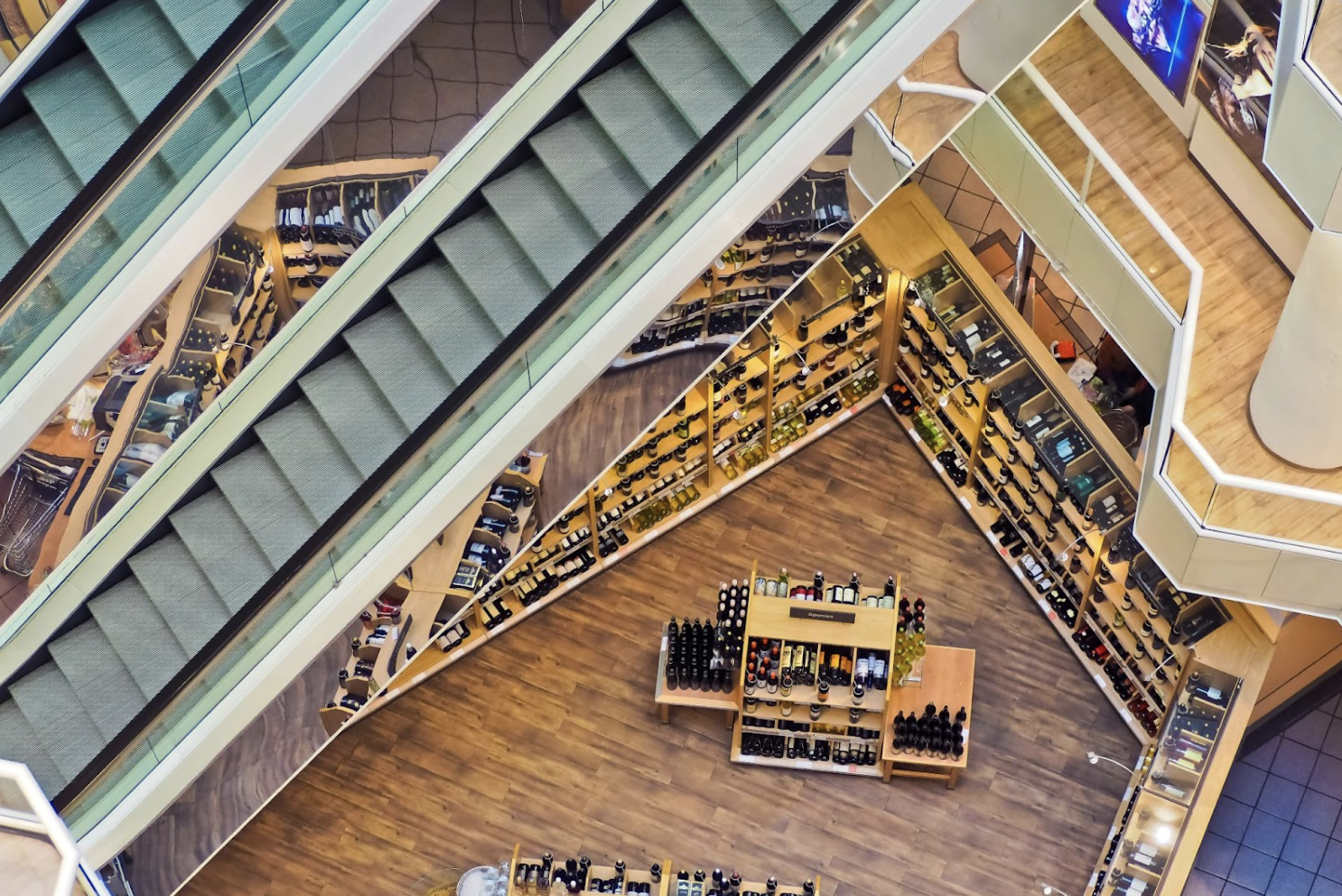Ever walked into a shop and felt an instant connection? It results from clever retail design, 3D rendering, and thoughtful planning. Let’s dive into the world of retail spaces and uncover the secrets to keeping customers coming back for more.
In today’s competitive market, simply stocking great products is not enough. Retailers must create an environment that wows customers and keeps them returning for more. It’s about crafting an experience that lingers in mind long after unpacking the shopping bags.
But how do we achieve this retail nirvana? It all starts with understanding the psychology behind shopping and translating that into a space that resonates with your target audience. And that’s where 3D rendering for retail design comes in handy, allowing us to visualise and perfect these spaces before they’re built.

Understanding Customer Behaviour
Before we dive into the nitty-gritty of store design, let’s talk about the star of the show: the customer. Understanding what makes shoppers tick is crucial to creating a space they’ll love.
Think about it – have you ever noticed how you navigate a store? Do you beeline for the sale section or prefer to meander through the aisles? Your behaviour as a shopper isn’t random. It’s influenced by many factors, from the store’s layout to the music playing in the background.
Retailers increasingly turn to data and customer feedback to inform their design decisions. By analysing foot traffic patterns, dwell times, and purchase behaviours, they can create layouts that optimise the shopping experience. It’s like being a mind reader but with more spreadsheets and less crystal ball gazing.
And here’s where retail architectural 3D rendering comes to the rescue. It allows designers to virtually test different layouts and configurations, allowing them to see how customers might interact with the space before a single shelf is installed.
The Impact of Store Layout
Now, let’s discuss the backbone of any retail space—the layout. It’s not just about where you place your shelves and counters—it’s an art form in itself.
There are several layouts to choose from, each with its own superpower. The grid layout, for instance, is the bread and butter of supermarkets and hardware stores. It’s efficient, predictable, and perfect for when you know exactly what you need.
On the flip side, we have the free-flow layout. This is where things get fun. It’s all about creating a journey for the customer, leading them through carefully curated displays and unexpected discoveries. Think of your favourite boutique or lifestyle store – chances are, it’s rocking a free-flow layout.
Then there’s the boutique layout, like the cool kid of store designs. It’s all about creating little shops within the main store, each with its own distinct personality. It’s perfect for department stores or larger retailers looking to create a more intimate shopping experience.
The beauty of retail 3D renderings is that they allow designers to experiment with these layouts, tweaking and refining until they find the perfect flow for their space and customers.
Creating an Inviting Atmosphere
Layout sorted? Great! Now, let’s set the mood. Creating an inviting atmosphere is like hosting the perfect dinner party – it’s all about getting the ambiance just right.
Lighting is your best friend here. It can transform a space from clinical to cozy with just a flick of a switch. Warm, soft lighting can create an intimate atmosphere, while bright, cool lights can energise a space. And don’t forget about accent lighting to make your products pop!

Then there’s the power of sound. The right music can set the tone for your store, influencing how long customers linger and how much they spend. It’s like having a DJ on your shop floor.
And let’s not forget about scent. Our noses are powerful memory triggers; a signature scent can become part of your brand identity. Just think about how you can recognize an Abercrombie & Fitch store from a mile away!
Temperature matters, too. No one wants to shop in a sauna or an igloo. Finding that Goldilocks zone of “just right” can make all the difference in how long customers stay.
Designing for Accessibility and Convenience
Now, let’s discuss making your store easy to navigate. After all, a frustrated customer is an ex-customer.
First up is accessibility. Your store should be welcoming to everyone, regardless of their mobility needs. Wide aisles, clear signage, and easily reachable products are must-haves. It’s not just good practice – it’s good business.
Strategic product placement is another key factor. Ever noticed how milk is always at the back of the grocery store? That’s no coincidence. It’s about creating a journey through the store, exposing customers to more products.
And let’s not forget about the checkout experience. Nothing kills the shopping buzz faster than a long, slow-moving queue. Consider multiple checkout points or mobile POS systems to keep things flowing smoothly.
Visual Merchandising Techniques
Time to make your products shine! Visual merchandising is where science meets art in the retail world.
Your window display is your store’s handshake with the world. It needs to grab attention, tell a story, and entice people inside. Think of it as your store’s elevator pitch – you’ve got just a few seconds to make an impression.
Inside the store, it’s all about creating vignettes and stories with your product displays. Group complementary items together, use varying heights to create interest and don’t be afraid to get creative. You’re not just selling products but lifestyles and experiences.
Color plays a huge role, too. Use it to create mood, highlight products, or guide customers through your store. And texture? That’s the secret ingredient that adds depth and interest to your displays.
This is where retail counter 3D rendering can be incredibly useful. It allows you to experiment with different display configurations and see how they’ll look before committing.
Leveraging Technology in Store Design
Welcome to the future of retail! Technology is revolutionising how we shop, and smart retailers are embracing it.
Digital displays can instantly transform your store’s atmosphere, allowing you to change your decor to match seasons, promotions, or even times of day. Interactive kiosks can provide product information, check stock levels, or even allow customers to place orders for out-of-stock items.
Mobile apps are another game-changer. They can offer personalised recommendations, help customers navigate your store, or even allow for contactless payments. It’s like having a personal shopping assistant in every customer’s pocket.
And let’s not forget about augmented reality. Imagine seeing how that new sofa would look in your living room, all from the comfort of the store. It’s not science fiction – it’s the new reality of retail.
Personalisation and Customer Experience
In a world of mass production, personalisation is the new luxury. It’s about making each customer feel like the store was designed just for them.
This could be as simple as a personalised greeting when they enter the store or as complex as AI-driven product recommendations based on their shopping history. It’s about creating those “wow” moments that turn a transaction into an experience.
Consider creating customisation stations where customers can personalise their purchases. Or how about a VIP area for your most loyal customers? These little touches can turn a casual shopper into a die-hard fan.
Sustainable and Eco-Friendly Design
Green is the new black in retail design. Consumers are increasingly conscious of their environmental impact and expect the same from the stores they frequent.
Consider using sustainable materials in your store design. Reclaimed wood, recycled plastics, and low-VOC paints are all great options. Energy-efficient lighting and HVAC systems reduce your carbon footprint and save you money in the long run.
But sustainability isn’t just about materials. It’s also about creating a space that stands the test of time. Design with flexibility, allowing your store to evolve without needing a complete overhaul every few years.

Conclusion
Phew! We’ve covered a lot of ground, haven’t we? From understanding customer behaviour to leveraging the latest technology, designing a retail space that keeps customers returning is no small feat. But get it right, and you’ll create a store that’s more than just a place to buy things – it becomes a destination in its own right.
Remember, great retail design is about more than just aesthetics. It’s about creating an environment that resonates with your customers, makes them feel valued, and keeps them returning for more. Whether you use 3D rendering for retail design to plan your space or focus on sustainable materials, every decision should be made with your customer in mind.
So, ready to transform your retail space? Use the checklist below to get started, and who knows – your store might just become the next big thing in retail!
Checklist for Designing a Customer-Centric Retail Space
- Analyse customer behaviour and preferences
- Choose an appropriate store layout
- Create an inviting atmosphere with lighting, music, and scent
- Ensure accessibility for all customers
- Implement strategic product placement
- Design eye-catching window and in-store displays
- Integrate technology to enhance the shopping experience
- Personalise the customer journey
- Incorporate sustainable and eco-friendly design elements
- Use 3D rendering tools to visualize and refine your design
Remember, great retail design is an ongoing process. Keep listening to your customers, stay open to new ideas, and don’t be afraid to evolve. Happy designing!
Author:
Aimee S. Marshall
Aimee is a seasoned digital artist and design enthusiast who is passionate about creating stunning visuals. With over a decade of experience in 3D rendering and design, she has worked on projects spanning various industries, from architecture and interior design to product visualization and advertising. Aimee shares her expertise and insights through writing, mentoring, and speaking engagements, aiming to inspire others in the dynamic world of 3D rendering and design.

